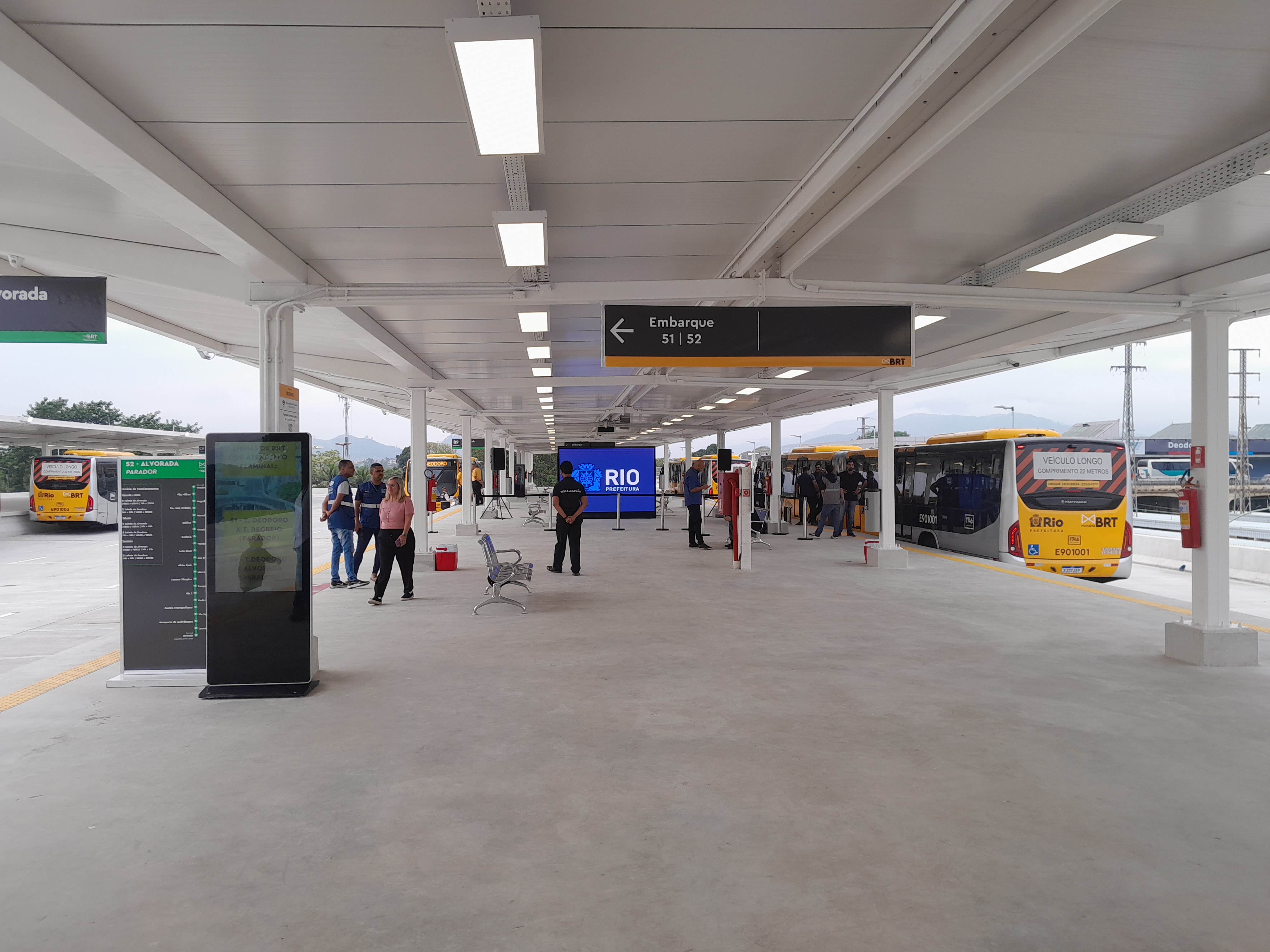From September 15 to 19, the Northern Beltway — a project carried out by Odebrecht Engenharia e Construção and...
Built by OEC, Deodoro Terminal opens in Rio de Janeiro
DATE: 09/28/2023
 On September 20, Rio de Janeiro City Hall inaugurated the Deodoro Terminal, the first of four that will make up the route of the BRT Transbrasil, one of the largest exclusive bus corridors in the world. Until the equipment is ready, the new terminal will integrate with the BRT Transolímpica, conventional urban buses and Supervia trains. The promise with the new connection is that users leaving neighborhoods such as Guaratiba, Sepetiba and Santa Cruz, in the West Zone, will be able to save around half an hour on their journey to the center of the capital.
On September 20, Rio de Janeiro City Hall inaugurated the Deodoro Terminal, the first of four that will make up the route of the BRT Transbrasil, one of the largest exclusive bus corridors in the world. Until the equipment is ready, the new terminal will integrate with the BRT Transolímpica, conventional urban buses and Supervia trains. The promise with the new connection is that users leaving neighborhoods such as Guaratiba, Sepetiba and Santa Cruz, in the West Zone, will be able to save around half an hour on their journey to the center of the capital.
Deodoro Terminal is approximately ten thousand square meters and consists of two floors. The upper floor is for the BRT fleets. There are two platforms, each with eight spaces for boarding and disembarking, totaling 2,500 square meters. The first floor, meanwhile, will receive the feeder lines. The 3,200 square meter platform has 24 spaces for the feeder buses that will access the terminal. Passengers can access the suspended platform by stairs or elevators. On this floor there will be a space for disabled users to access the buses. The venue also has a ticket office, toilets, an administrative building and a support sector. The route to Supervia’s Deodoro train station will be via a 236-square-meter footbridge with accessibility ramps and stairs.
Work on the BRT Transbrasil is nearing completion. In total, there will be 18 stations, four terminals (Deodoro, Margaridas, Missões and the Gentileza intermodal) and a further 22 interventions, such as viaducts and widened lanes, over 26 km.
Sistema BRT
A previsão é que todo o Sistema BRT esteja em pleno funcionamento no primeiro semestre de 2024. Somando os quatro corredores (Transoeste, Transcarioca, Transolímpica e Transbrasil), serão 140 estações, 15 terminais e quase 150 quilômetros interligando Zona Oeste, região da Barra da Tijuca, Zona Norte e Centro. Até 2026, a previsão é que o sistema transporte cerca de 700 mil passageiros por dia (hoje, são transportadas cerca de 347 mil pessoas diariamente).



No comments